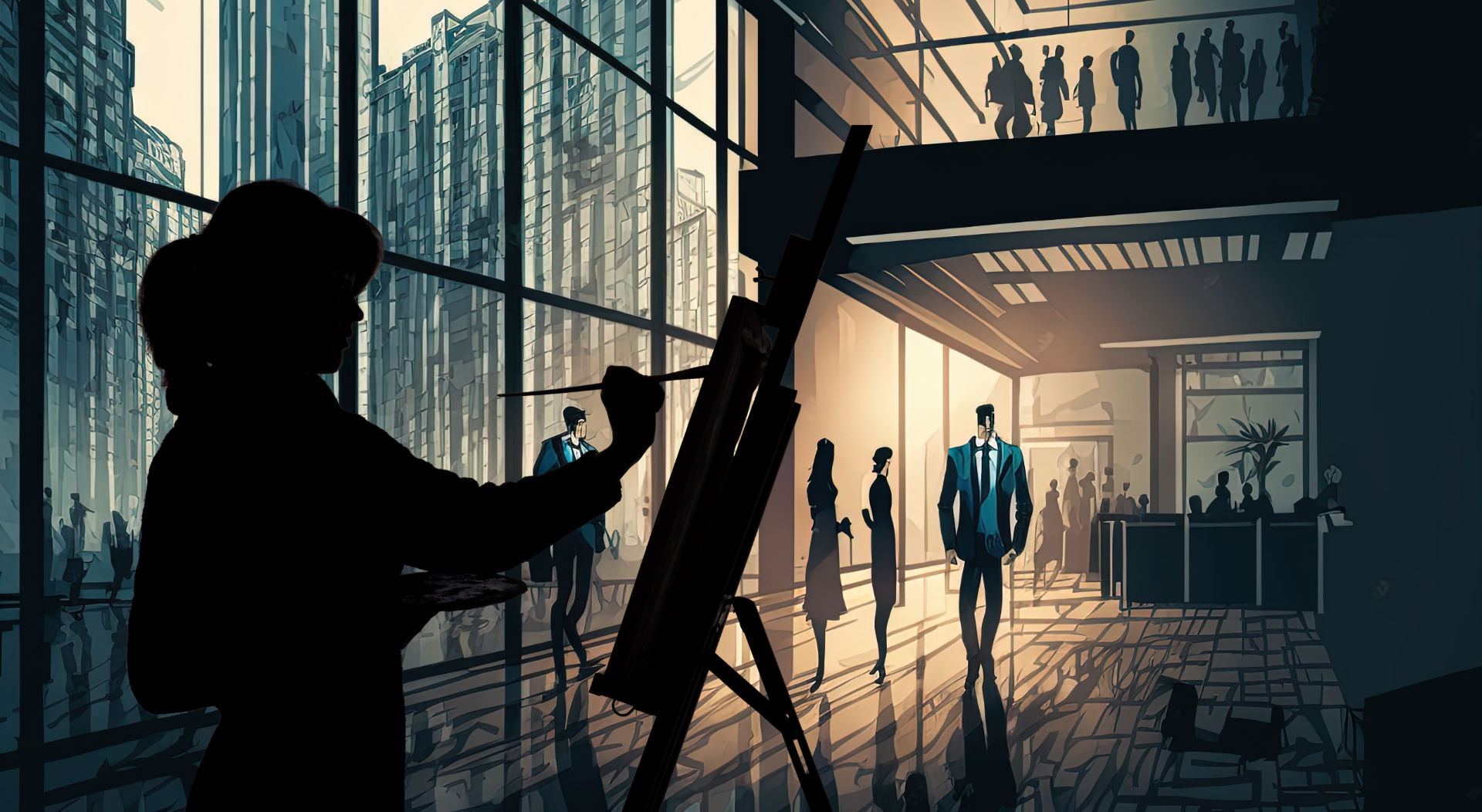
03 Mar Artists in the workplace!
On the importance of art in business:
Without constant investment in developing the creativity of staff, companies will stagnate and eventually fail. Yet, while business leaders have been lauding the importance of creativity for a long time, and despite widespread recognition of its importance in business, many companies struggle to effectively nurture it in their employees.
The routine of corporate life can dull the sharpness of people’s creativity over time. Further, those employees who are naturally highly creative are often easily bored and require challenges to keep their energies engaged. Not having enough of such stimulus can lead to burnout and ultimately result in them quitting, determined to find more stimulating work. (Lack of sufficiently engaging challenges has been one of the factors in the current “Great Resignation”.) Talented individuals seek out opportunities to work for firms that offer them a chance to be part of interesting projects and to participate in an environment that fosters creative thinking – companies that are perceived as creative and innovative naturally attract higher-grade recruits. In contrast, companies that fail to prioritise creativity risk being seen as stagnant and unattractive to top talent.
All this makes it all the more important for companies to emphasise creativity in their L&D, recruitment and retention strategies. But how can companies foster creativity in their employees? One proven approach is to provide extended periods of interaction with working artists. Such interactions, lasting weeks rather than hours, can have a measurable impact on the creativity of staff and ultimately improve the performance of the company as a whole. It is not enough to pay lip-service to creativity. An occasional “creative thinking” workshop or brainstorming session is worse than useless as it has the effect of appearing to be useful while actually having practically zero effect on either individual creativity or team engagement. A waste of everyone’s time and effort, really. To truly foster creativity in employees, companies must create a culture that values, encourages and rewards creative thinking. This means providing resources for professional development, recognising and celebrating creative achievements, and encouraging collaboration and experimentation. Such a culture also makes allowances for the fact that most experiments are learnings, and often they simply provide another demonstration of assumptions being wrong and goals needing to be reassessed.
The benefits of working with artists are multifaceted but there is one fundamental common denominator: artists usually possess a unique perspective on work and working methods and their ways of thinking can stimulate new ideas and approaches to problem-solving. By exposing employees to these different ways of thinking, companies can break down the routine and structure that often stifles creativity in the workplace or ameliorate anxieties, such as resistance to accepting new technologies as vital tools. Noah Weinstein, senior creative programs manager at Autodesk defines this ability like this – “Artists are great explorers and discoverers when it comes to using technology.”
A single workshop will likely not be enough to produce lasting change in a company’s culture, so some leaders have begun to experiment with longer-term engagements with artists. These residencies, which last for several weeks, allow employees to work alongside artists and either observe or, at times, participate in a range of artistic activities, from painting and sculpture to music and dance. The results of these longer-term engagements can be far more impressive than those of shorter workshops. In a recent study published in the Journal of Business Research, researchers found that employees who participated in extended artist residencies showed a significant increase in their levels of creativity and innovation. This increase was not just self-reported; the researchers were able to measure the impact of the residencies using a variety of objective metrics, including patent filings and new product launches.
Of course, we must to note that not all artists are equally effective at stimulating creativity in the workplace. Companies must carefully select the artists with whom they work, and design the engagement to fit the specific needs of their employees. It is also important to recognise that these engagements are not a panacea for all of a company’s problems; creativity is the fuel that powers innovation but is just one of the factors that contribute to success in business.
The evidence suggests that extended periods of interaction with working artists can have a measurable impact on the creativity of staff in companies. By breaking down the routine and structure of corporate life and exposing employees to new ways of thinking, companies can foster a culture of innovation that will pay dividends in the long run. It’s time for more companies to recognise the value of working with artists and to invest in the creative potential of their employees.


